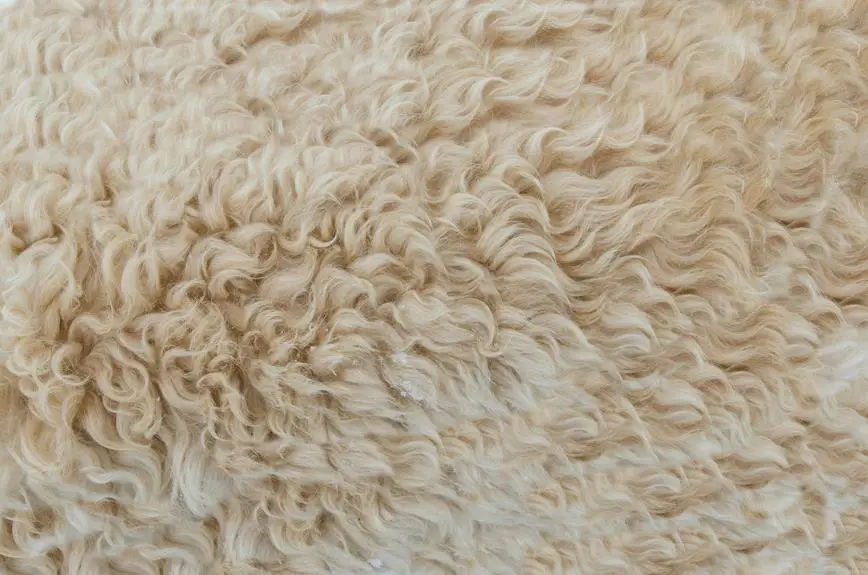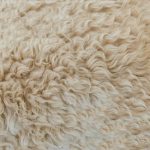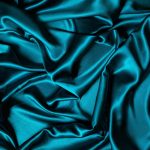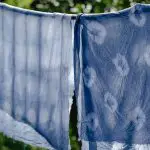When you're choosing between voile and chiffon, it's essential to understand their distinct qualities. Voile, crafted from cotton or linen, offers durability and easy maintenance, making it a practical option for various uses. On the other hand, chiffon, often made from silk or synthetic fibers, provides a luxurious touch but demands more careful handling. So, how do you decide which fabric suits your needs best? The answer lies in understanding their characteristics and applications, leading you to make a more informed choice that aligns with your style and lifestyle.
Table of Contents
Overview of Voile
Voile is a lightweight, sheer fabric made from cotton or linen, perfect for creating airy garments and elegant window treatments. Its delicate texture and semi-transparent quality give it a soft, flowing appearance, making it an ideal choice for summer dresses, blouses, and curtains. When you wear or decorate with voile, you'll appreciate how it allows light to filter through while still providing some privacy.
You'll find that voile is often used in layering, adding depth and dimension to outfits or room designs. It drapes beautifully, which means it can create lovely silhouettes when used in skirts or flowing tops. The fabric's breathability makes it comfortable to wear in warmer weather, keeping you cool and stylish at the same time.
Caring for voile is relatively simple; you can usually machine wash it on a gentle cycle. Just be cautious with high heat when drying, as it can shrink or lose its shape.
Overview of Chiffon
Chiffon is a lightweight, sheer fabric made from silk, nylon, or polyester, giving it a soft and flowing texture.
You'll often find chiffon in evening gowns, blouses, and scarves due to its elegant drape and versatility.
Understanding its composition and common uses will help you appreciate why chiffon is a popular choice in fashion.
Fabric Composition and Texture
Typically, chiffon is a lightweight, sheer fabric made from silk or synthetic fibers, known for its soft drape and delicate texture. You'll find that chiffon has a slightly crinkled surface, which gives it a unique visual appeal. This texture is what sets it apart from other lightweight fabrics. The fibers are often twisted together, allowing the fabric to maintain its airy quality while also having a bit of body.
When you touch chiffon, you'll notice its smooth, almost slippery feel, which adds to its luxurious allure. The fabric is typically transparent, allowing layers to create depth in designs. Chiffon can be dyed easily, resulting in vibrant colors or subtle pastels, making it a favorite for various applications.
You should also consider the different types of chiffon available, including silk chiffon, polyester chiffon, and nylon chiffon. Each type has its own characteristics, with silk chiffon offering a more elegant feel, while synthetic options provide durability and affordability. Regardless of the type, chiffon's lightweight nature and flowy movement make it a versatile choice for various garments.
Common Uses and Applications
You'll often see chiffon used in elegant evening wear, flowing dresses, and lightweight blouses, making it a popular choice for special occasions and formal events. Its sheer, airy quality adds a touch of sophistication, perfect for creating a romantic look. Chiffon drapes beautifully, allowing designers to craft garments that float gracefully with movement.
Here are three common uses of chiffon:
- Bridal Gowns: Chiffon is often used in wedding dresses, providing a delicate layer that adds dimension while maintaining a light, ethereal feel. Many brides love its romantic quality.
- Evening Dresses: For galas or formal parties, chiffon dresses offer a chic, elegant aesthetic. The fabric's softness enhances the overall silhouette, making it a favorite for evening wear.
- Scarves and Shawls: Chiffon scarves and shawls add a stylish flair to any outfit. Their lightweight nature makes them easy to wear and perfect for layering, providing both warmth and fashion.
In short, chiffon's versatility and elegance make it a go-to fabric for a range of stylish applications. Whether you're dressing up for a special event or accessorizing, chiffon can elevate your look effortlessly.
Key Characteristics of Voile
When you explore voile, you'll notice its lightweight and sheer texture, making it a favorite for various applications.
Typically made from cotton or a cotton blend, this fabric offers both breathability and a soft touch.
You'll often see it used in garments, curtains, and other decorative items, showcasing its versatility.
Fabric Composition and Texture
Voile, known for its lightweight and sheer quality, is often made from cotton or polyester, giving it a soft, crisp texture that drapes beautifully.
This fabric's composition not only contributes to its delicate appearance but also to its versatility. You'll appreciate how it feels against your skin and the way it moves, making it a popular choice for various projects.
Here are three key characteristics of voile's texture:
- Softness: Voile's cotton or polyester fibers create a gentle touch, making it comfortable to wear or use in home décor.
- Crispness: The fabric maintains a subtle stiffness, which allows it to hold its shape well while still being lightweight and airy.
- Sheerness: Voile is semi-transparent, allowing light to filter through beautifully. This quality can add an elegant touch to your designs.
Common Uses and Applications
Commonly used in clothing and home décor, voile's lightweight and sheer nature makes it perfect for creating flowing dresses, curtains, and other elegant designs. If you're looking to add a touch of sophistication to your wardrobe or living space, voile is an excellent choice. Its versatility allows you to use it in various applications, from summer dresses to delicate blouses.
In home décor, you can use voile to create airy window treatments that let in light while providing a sense of privacy. Layering it with other fabrics enhances both texture and depth. Here's a quick overview of some common uses:
| Application | Description |
|---|---|
| Clothing | Ideal for summer dresses, blouses, and skirts due to its breathability. |
| Home Décor | Perfect for sheer curtains, table runners, and bed canopies. |
| Accessories | Great for scarves and lightweight wraps, adding elegance without bulk. |
Whether you're sewing a new outfit or refreshing your home, consider incorporating voile for its elegant, lightweight feel. You'll appreciate its ability to elevate any project you undertake!
Key Characteristics of Chiffon
Chiffon is known for its lightweight, sheer texture that drapes beautifully, making it a popular choice for elegant garments and accessories. If you're considering using chiffon, you'll appreciate its unique characteristics that set it apart from other fabrics.
Here are three key traits you should know about chiffon:
- Softness: Chiffon has a delicate feel that adds an air of sophistication to any outfit. Its smooth surface makes it comfortable to wear, ensuring you look and feel great.
- Transparency: The sheer quality of chiffon allows it to create beautiful layering effects. This transparency is perfect for adding depth and dimension to your designs, whether it's a flowing dress or an elegant scarf.
- Versatility: You can use chiffon in various styles, from casual to formal. Its adaptability means you can dress it up or down, making it a staple in any wardrobe.
With these characteristics, chiffon stands out as a fabric that enhances your fashion choices, adding a touch of grace and elegance to your look.
Common Uses for Voile
You'll find voile is often used in garments like blouses, skirts, and dresses, thanks to its lightweight and airy nature. This fabric drapes beautifully, making it perfect for flowy silhouettes that enhance your comfort and style. Its sheer quality allows for layering, so you can easily pair it with other fabrics for added depth.
Voile's softness also makes it a popular choice for children's clothing. You'll appreciate how gentle it feels against delicate skin, and its breathability keeps kids cool during warm weather.
Beyond apparel, voile shines in home décor. You might use it for curtains, giving your living space a light and breezy feel while still allowing natural light to filter through.
Additionally, voile is often used for tablecloths and overlays in special events like weddings or parties. It adds a touch of elegance without being overly heavy or formal.
If you're into crafting, consider using voile for making lightweight scarves or accessories. Its versatility means you can easily explore different applications, whether you're dressing up or sprucing up your home.
In short, voile's charm lies in its ability to elevate both your wardrobe and living spaces effortlessly.
Common Uses for Chiffon
Like voile, chiffon is frequently used in garments, especially for elegant dresses, blouses, and evening wear due to its delicate, flowing quality. The lightweight nature of chiffon makes it ideal for layering, adding a touch of sophistication to your outfits. You'll often find it used in various styles, enhancing both casual and formal looks.
Here are three common uses for chiffon:
- Evening Gowns: Chiffon's ethereal drape makes it a popular choice for formal dresses, providing elegance for special occasions such as weddings and proms.
- Blouses and Tops: Many fashion-forward blouses incorporate chiffon, giving you a chic yet comfortable option for your everyday wardrobe.
- Scarves and Wraps: Chiffon scarves are a go-to accessory, adding a stylish flair to any outfit while remaining lightweight and easy to wear.
With its versatility, chiffon can elevate any look, whether you're dressing up for a night out or simply adding a layer to your daytime ensemble. Embrace its charm, and you'll find countless ways to incorporate chiffon into your wardrobe!
Comparing Durability and Care
When comparing durability and care, voile tends to be more resilient than chiffon, making it easier to maintain over time. Voile's sturdiness allows it to withstand regular use without significant wear, while chiffon, being delicate, can be prone to snagging and tearing. This difference means you'll likely find voile items lasting longer in your wardrobe.
In terms of care, voile can usually be machine washed on a gentle cycle, while chiffon often requires hand washing or dry cleaning to preserve its structure. This can make a big difference in how much effort you need to put into maintaining your fabrics.
Here's a quick comparison to help you understand:
| Fabric | Durability | Care Instructions |
|---|---|---|
| Voile | More resilient | Machine wash gentle cycle |
| Chiffon | Less durable | Hand wash or dry clean |
Choosing between voile and chiffon comes down to how much maintenance you're willing to commit. Voile is a practical choice for everyday wear, while chiffon adds a touch of elegance but requires more care.
Frequently Asked Questions
Can Voile and Chiffon Be Mixed in One Garment?
Yes, you can mix voile and chiffon in one garment! Combining their textures can create a unique look. Just ensure the fabrics complement each other to maintain balance and flow in your design.
Which Fabric Is More Breathable for Summer Wear?
When you're choosing fabrics for summer wear, you'll find that both options offer breathability. However, you'll likely prefer voile for its lighter weight and airy feel, making it ideal for hot, sunny days.
How Do I Store Voile and Chiffon Garments?
To store your voile and chiffon garments, you've gotta hang them in a cool, dry place. Avoid direct sunlight and use padded hangers to prevent creasing. Folding them gently in a breathable garment bag works too.
Are There Eco-Friendly Options for Voile and Chiffon?
Yes, there are eco-friendly options for both fabrics. You can look for organic cotton voile or recycled polyester chiffon. These materials reduce environmental impact, and they often maintain the same beautiful qualities you love in traditional fabrics.
What Type of Sewing Machine Works Best for These Fabrics?
When sewing delicate fabrics like voile and chiffon, you'll want a sewing machine with a fine needle and adjustable tension. A walking foot can help prevent slipping, ensuring smooth seams and a professional finish.
- How Does Ring Spun Cotton Affect Garment Fit and Shape Retention? - August 13, 2024
- What Are the Challenges in Producing Ring Spun Cotton? - August 13, 2024
- Is Ring Spun Cotton Suitable for Plus-Size Clothing? - August 13, 2024







